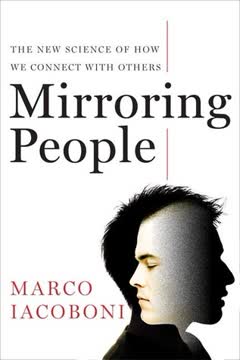Key Takeaways
1. Mirror neurons: The revolutionary discovery that transforms our understanding of human behavior
"Mirror neurons undoubtedly provide, for the first time in history, a plausible neurophysiological explanation for complex forms of social cognition and interaction."
Accidental discovery. In the early 1990s, researchers at the University of Parma stumbled upon a groundbreaking finding while studying macaque monkeys. They observed that certain neurons in the monkeys' brains fired not only when the animals performed an action but also when they watched others perform the same action. These cells were dubbed "mirror neurons."
Bridging perception and action. Mirror neurons challenge the traditional view of separate brain functions for perception, action, and cognition. Instead, they suggest a unified process where observing an action activates the same neural circuits involved in performing that action. This discovery has profound implications for understanding how humans:
- Learn through observation
- Empathize with others
- Communicate and develop language
- Form social bonds and cultural norms
2. Imitation and empathy: How mirror neurons enable social learning and emotional connections
"When we see someone else suffering or in pain, mirror neurons help us to read her or his facial expression and actually make us feel the suffering or the pain of the other person."
Neural basis of empathy. Mirror neurons provide a biological mechanism for understanding and sharing the emotions of others. When we observe someone experiencing an emotion, our mirror neurons activate as if we were experiencing that emotion ourselves. This neural mirroring forms the basis of empathy and social cognition.
Imitation and learning. The mirror neuron system plays a crucial role in how humans learn through imitation. This ability is particularly evident in:
- Infants and young children learning new skills
- Cultural transmission of behaviors and traditions
- Development of complex social behaviors
Studies have shown that individuals with stronger mirror neuron activity tend to be more empathetic and socially adept, highlighting the system's importance in human social development and interaction.
3. Language and communication: The role of mirror neurons in human speech and gestures
"Gestures and language are one system."
Gestural origins of language. The discovery of mirror neurons supports theories that human language evolved from manual gestures. The close connection between hand and mouth actions in the brain, as well as the ability of mirror neurons to understand the intentions behind observed actions, provides a neural basis for the development of symbolic communication.
Multimodal communication. Mirror neurons respond to both visual and auditory stimuli, suggesting they play a role in integrating different modes of communication. This integration is evident in:
- The use of gestures while speaking, even when on the phone
- The ability to understand speech sounds through motor simulation
- The role of facial expressions in conveying meaning
Research has shown that disrupting the motor areas of the brain can impair speech perception, further supporting the idea that language comprehension involves a form of internal simulation facilitated by mirror neurons.
4. Self-awareness and identity: Mirror neurons as the bridge between self and other
"Mirror neurons put the self and the other back together again."
Intersubjectivity. Mirror neurons challenge the traditional Western notion of a clear separation between self and other. Instead, they suggest a fundamental interconnectedness between individuals, where understanding others involves a form of neural simulation of their experiences.
Development of self-awareness. The mirror neuron system likely plays a crucial role in the development of self-awareness and identity. This is evidenced by:
- The correlation between self-recognition abilities and imitative behavior in children
- The activation of mirror neuron areas during self-face recognition tasks
- The role of social interactions in shaping mirror neuron responses
These findings suggest that our sense of self is deeply intertwined with our understanding of others, mediated by the mirror neuron system.
5. Autism and social deficits: The potential link to mirror neuron dysfunction
"A dysfunction of the mirror neuron system is responsible for autism."
Mirror neuron hypothesis of autism. Several studies have found reduced activity in the mirror neuron system of individuals with autism spectrum disorders. This deficit may explain many of the social and communicative challenges associated with autism, including:
- Difficulties in understanding others' intentions and emotions
- Impaired imitation abilities
- Challenges in developing language and social skills
Therapeutic implications. Understanding the role of mirror neurons in autism has led to new approaches in therapy and intervention:
- Imitation-based treatments showing promising results
- Focus on enhancing social mirroring and reciprocal interactions
- Potential for targeted interventions to strengthen mirror neuron function
While more research is needed, these findings offer hope for new strategies to support individuals with autism and other social cognitive disorders.
6. Violence and addiction: The dark side of neural mirroring
"When you and I are facing each other and imitating each other, my right hand is in the same sector of space as your left hand. We 'share' this same space and thereby get literally closer to each other."
Imitative violence. The same mirror neuron mechanisms that enable empathy and social learning can also contribute to negative behaviors. Research suggests that exposure to media violence can lead to increased aggressive behavior through the activation of mirror neurons, potentially explaining the impact of violent media on society.
Addiction and relapse. Mirror neurons may play a role in addiction and relapse by:
- Activating cravings when observing others engaging in addictive behaviors
- Facilitating the social transmission of addictive patterns
- Contributing to the difficulty of maintaining abstinence in social situations
Understanding these mechanisms could lead to more effective prevention and treatment strategies for both violence and addiction.
7. Neuropolitics and decision-making: How mirror neurons shape our choices and affiliations
"Mirror neurons are brain cells that make our experience, mostly made of interactions with other people, deeply meaningful."
Political affiliations. Research has shown that mirror neuron activity differs between political "sophisticates" and novices when viewing political figures. This suggests that our political affiliations and decisions may be influenced by unconscious neural mirroring processes.
Consumer behavior. Mirror neurons likely play a role in consumer decision-making and brand affiliations:
- Activation of mirror neuron areas when viewing advertisements
- Increased mirror neuron activity associated with brand loyalty
- Potential for using neural responses to predict consumer behavior
These findings have implications for understanding political polarization, marketing strategies, and the formation of social identities.
8. Existential neuroscience: Redefining human nature through mirror neuron research
"Mirror neurons are the cells in our brain that make our experience, mostly made of interactions with other people, deeply meaningful."
Embodied cognition. Mirror neuron research supports the theory of embodied cognition, which posits that our mental processes are shaped by our physical experiences and interactions with the world. This challenges traditional views of the mind as separate from the body.
Ethical implications. The discovery of mirror neurons raises important philosophical and ethical questions:
- The nature of free will and individual autonomy
- The biological basis of morality and empathy
- The potential for using neuroscientific insights to shape social policy
As our understanding of mirror neurons grows, it may fundamentally reshape our conception of human nature and our approach to social, ethical, and political issues. This new "existential neuroscience" encourages us to embrace our deeply interconnected nature and use this knowledge to create more empathetic and cooperative societies.
Last updated:
FAQ
What’s Mirroring People: The New Science of How We Connect with Others by Marco Iacoboni about?
- Exploration of mirror neurons: The book investigates the discovery and science of mirror neurons—brain cells that fire both when we act and when we observe others acting.
- Social connection and empathy: Iacoboni explains how these neurons are fundamental to understanding intentions, empathy, and social cognition.
- Broader implications: The narrative extends to how mirror neurons influence language, culture, autism, violence, marketing, and politics, offering a comprehensive look at their impact on human behavior.
Why should I read Mirroring People by Marco Iacoboni?
- Groundbreaking neuroscience insight: The book provides a first-hand account of the discovery of mirror neurons and their revolutionary impact on understanding human social behavior.
- Accessible and engaging: Iacoboni combines scientific rigor with storytelling, making complex neuroscience understandable and relevant.
- Societal and practical relevance: Insights from mirror neuron research inform education, therapy, social policy, and our understanding of empathy and social disorders.
What are the key takeaways from Mirroring People by Marco Iacoboni?
- Mirror neurons shape connection: These brain cells are central to imitation, empathy, and understanding others’ intentions.
- Neural basis for social behavior: Mirror neurons provide a biological explanation for social cognition, language, and cultural learning.
- Implications for disorders and society: The book links mirror neuron dysfunction to autism and explores their role in media, marketing, and politics, suggesting new approaches to therapy and policy.
What are mirror neurons, according to Mirroring People by Marco Iacoboni?
- Definition and discovery: Mirror neurons are brain cells that activate both when performing an action and when observing the same action, first found in monkeys and later in humans.
- Dual coding of action: They break the traditional separation between perception and action, allowing us to internally simulate others’ behaviors.
- Types and specificity: Mirror neurons can be strictly or broadly congruent, responding to identical or similar goal-directed actions, and are sensitive to context and intention.
How do mirror neurons enable empathy and social understanding in Mirroring People?
- Automatic emotional resonance: Mirror neurons allow us to simulate others’ actions and emotions, forming the neural basis of empathy.
- Behavioral mimicry: Unconscious imitation of facial expressions and gestures fosters emotional rapport and social bonding.
- Neuroimaging evidence: Brain scans show that observing or imitating emotions activates both mirror neuron areas and limbic structures, supporting empathic responses.
How does Mirroring People by Marco Iacoboni explain the development of the mirror neuron system in children?
- Early motor activation: Infants’ motor areas activate when watching others, indicating early mirror neuron function.
- Learning through experience: Mirror neurons develop and strengthen as children observe and imitate actions, with increasing anticipation of others’ intentions by age one.
- Correlation with social skills: In older children, mirror neuron activity is linked to empathy and social competence, highlighting its importance in development.
What is the mirror neuron hypothesis regarding autism in Mirroring People by Marco Iacoboni?
- Imitation and social deficits: Autism is characterized by impaired social interaction and imitation, which the book links to mirror neuron dysfunction.
- Empirical support: Brain imaging and EEG studies show reduced mirror neuron activity in autistic individuals, correlating with social impairments.
- Therapeutic implications: Imitation-based interventions can engage mirror neurons and improve social behaviors, offering promising treatment strategies.
How do mirror neurons contribute to imitation and learning, as described in Mirroring People?
- Innate drive to imitate: Humans are born with the ability to mimic gestures, supported by mirror neuron activity.
- Goal-oriented imitation: Imitation focuses on the purpose of actions rather than exact movements, reflecting mirror neuron mediation.
- Social learning and culture: Mirror neurons enable learning by observation, facilitating language acquisition, tool use, and cultural transmission.
How are mirror neurons linked to language development and communication in Mirroring People?
- Gestural origins of language: Mirror neurons in areas analogous to Broca’s area support the theory that language evolved from manual gestures.
- Embodied semantics: Understanding action-related words activates motor areas, suggesting language comprehension involves simulating actions.
- Speech perception and production: Mirror neurons respond to both speech sounds and mouth movements, supporting the motor theory of speech perception.
What role do mirror neurons play in media violence, addiction, and marketing according to Mirroring People?
- Imitative violence: Mirror neurons explain the immediate imitation of violent behaviors seen in media, accounting for short-term effects.
- Addiction relapse: Observing addictive behaviors activates mirror neurons in former addicts, potentially triggering cravings and relapse.
- Neuromarketing insights: Mirror neuron activity predicts consumer identification with ads and products, offering a new biomarker for marketing effectiveness.
How does Mirroring People by Marco Iacoboni connect mirror neurons to political attitudes and social affiliation?
- Political identification: Higher mirror neuron activity is seen in politically engaged individuals when viewing political figures, reflecting stronger social mirroring.
- Impact of negative ads: Negative political advertising can suppress empathy-related brain activity, reducing emotional connection with candidates.
- Neural basis of political thinking: Differences in brain activation patterns reveal how mirror neurons influence political reasoning and affiliation.
What are the philosophical and societal implications of mirror neuron research in Mirroring People by Marco Iacoboni?
- Intersubjectivity and connection: Mirror neurons provide a neural basis for the immediate understanding of others’ minds, addressing philosophical questions about empathy and other minds.
- Existential neuroscience: The book argues that humans are biologically wired for empathy, connection, and meaning through mirror neuron systems.
- Societal impact: Recognizing our neural interconnectedness can inform policies to reduce violence, enhance empathy, and foster cross-cultural understanding, though societal resistance remains a challenge.
Review Summary
Mirroring People explores the fascinating world of mirror neurons and their role in human behavior, empathy, and social cognition. While some readers found the book engaging and accessible, others criticized its organization and writing style. Many appreciated the scientific insights but felt the author's personal anecdotes and attempts at humor were distracting. The book's discussion of mirror neurons' implications for autism, learning, and social interactions intrigued readers, though some questioned the extent of the author's claims. Overall, opinions were mixed, with the subject matter generally praised but the execution receiving varied reviews.
Similar Books


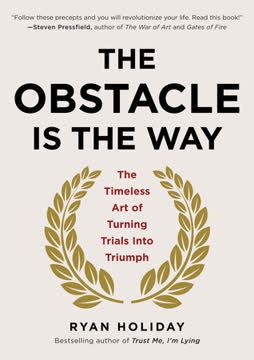
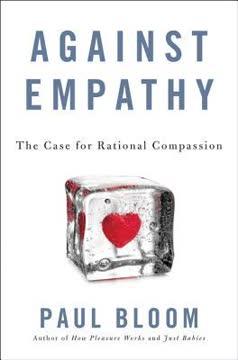
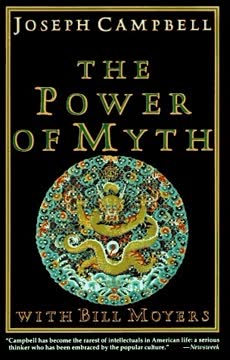




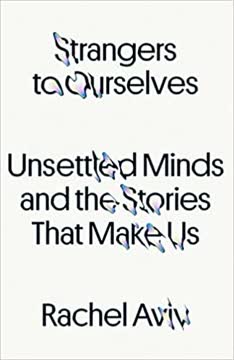
Download PDF
Download EPUB
.epub digital book format is ideal for reading ebooks on phones, tablets, and e-readers.
